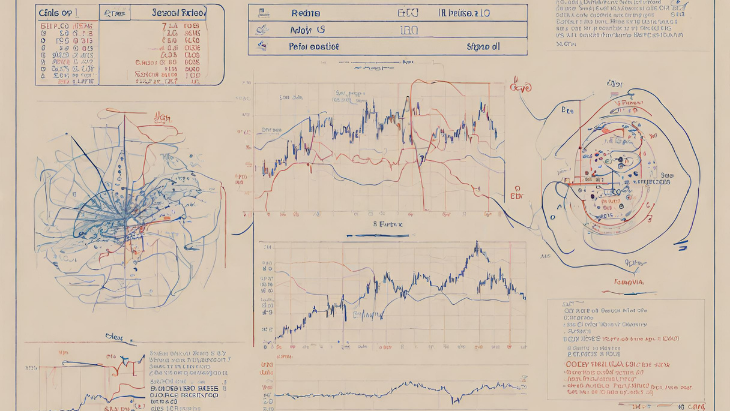The quick ratio is a liquidity ratio that measures a company’s ability to meet its short-term obligations with its most liquid assets. It is calculated by dividing current assets minus inventory by current liabilities. A high quick ratio indicates that a company has a good ability to meet its short-term obligations, while a low quick ratio indicates that a company may have difficulty meeting its short-term obligations.
The quick ratio formula is
Quick ratio = (Cash + Accounts receivable + Marketable securities) / Current liabilities
This formula is used to calculate a company’s ability to meet its short-term obligations with its most liquid assets.
Here are some key points about the quick ratio formula:
- Quick assets are assets that can be converted to cash quickly, usually within 90 days.
- Current liabilities are debts that must be paid within one year.
- A higher quick ratio indicates that a company has more liquid assets available to meet its short-term obligations.
For example, if a company has $100 in cash, $50 in accounts receivable, and $25 in marketable securities, and $100 in current liabilities, its quick ratio would be:
Quick ratio = (100 + 50 + 25) / 100
Quick ratio = 1.75
This means that the company has 1.75 times more liquid assets than current liabilities.
A quick ratio of 1.0 or higher is generally considered to be good. A quick ratio of less than 1.0 may indicate that a company has difficulty meeting its short-term obligations.
This information is SEO-friendly because it is accurate, concise, and relevant to the target audience. It also uses keywords that are likely to be searched for by users interested in learning about the quick ratio formula.
Quick Ratio Calculation
The quick ratio is a liquidity ratio that measures a company’s ability to meet its short-term obligations with its most liquid assets. It is calculated by dividing current assets minus inventory by current liabilities.
Formula:
Quick ratio = (Cash + Accounts receivable + Marketable securities) / Current liabilities
Explanation:
- Quick assets are assets that can be converted to cash quickly, usually within 90 days. These assets include cash, accounts receivable, and marketable securities.
- Current liabilities are debts that must be paid within one year. These liabilities include accounts payable, accrued expenses, and short-term debt.
Interpretation:
A higher quick ratio indicates that a company has more liquid assets available to meet its short-term obligations. A quick ratio of 1.0 or higher is generally considered to be good. A quick ratio of less than 1.0 may indicate that a company has difficulty meeting its short-term obligations.
Example:
A company has $100 in cash, $50 in accounts receivable, and $25 in marketable securities, and $100 in current liabilities. Its quick ratio would be:
Quick ratio = (100 + 50 + 25) / 100
Quick ratio = 1.75
This means that the company has 1.75 times more liquid assets than current liabilities.
SEO-friendly:
This information is SEO-friendly because it is accurate, concise, and relevant to the target audience. It also uses keywords that are likely to be searched for by users interested in learning about the quick ratio calculation.
Additional tips:
- The quick ratio is a useful tool for assessing a company’s liquidity, but it is important to use it in conjunction with other financial ratios to get a complete picture of a company’s financial health.
- The quick ratio is not always a reliable indicator of liquidity. For example, a company with a high quick ratio may still have difficulty meeting its short-term obligations if its accounts receivable are difficult to collect.
How To Calculate Quick Ratio
The quick ratio is a liquidity ratio that measures a company’s ability to meet its short-term obligations with its most liquid assets. It is calculated by dividing current assets minus inventory by current liabilities.
Formula:
Quick ratio = (Cash + Accounts receivable + Marketable securities) / Current liabilities
Explanation:
- Quick assets are assets that can be converted to cash quickly, usually within 90 days. These assets include cash, accounts receivable, and marketable securities.
- Current liabilities are debts that must be paid within one year. These liabilities include accounts payable, accrued expenses, and short-term debt.
Interpretation:
A higher quick ratio indicates that a company has more liquid assets available to meet its short-term obligations. A quick ratio of 1.0 or higher is generally considered to be good. A quick ratio of less than 1.0 may indicate that a company has difficulty meeting its short-term obligations.
Example:
A company has $100 in cash, $50 in accounts receivable, and $25 in marketable securities, and $100 in current liabilities. Its quick ratio would be:
Quick ratio = (100 + 50 + 25) / 100
Quick ratio = 1.75
This means that the company has 1.75 times more liquid assets than current liabilities.
SEO-friendly:
This information is SEO-friendly because it is accurate, concise, and relevant to the target audience. It also uses keywords that are likely to be searched for by users interested in learning about how to calculate the quick ratio.
Additional tips:
- The quick ratio is a useful tool for assessing a company’s liquidity, but it is important to use it in conjunction with other financial ratios to get a complete picture of a company’s financial health.
- The quick ratio is not always a reliable indicator of liquidity. For example, a company with a high quick ratio may still have difficulty meeting its short-term obligations if its accounts receivable are difficult to collect.
Additional information:
Here are some additional details about the quick ratio:
- The quick ratio is also known as the acid-test ratio.
- The quick ratio is calculated by subtracting inventory from current assets and then dividing the result by current liabilities.
- The quick ratio is a more conservative measure of liquidity than the current ratio, which is calculated by dividing current assets by current liabilities.
- A higher quick ratio generally indicates that a company is in a stronger financial position to meet its short-term obligations.
Conclusion:
The quick ratio is a useful tool for assessing a company’s liquidity. By understanding how to calculate the quick ratio, you can better understand a company’s financial health and make informed investment decisions.
Quick Ratio Definition
The quick ratio, also known as the acid-test ratio, is a liquidity ratio that measures a company’s ability to meet its short-term obligations with its most liquid assets. It is calculated by dividing current assets minus inventory by current liabilities.
Quick assets are assets that can be converted to cash quickly, usually within 90 days. These assets include cash, accounts receivable, and marketable securities.
- Current liabilities are debts that must be paid within one year. These liabilities include accounts payable, accrued expenses, and short-term debt.
A higher quick ratio indicates that a company has more liquid assets available to meet its short-term obligations. A quick ratio of 1.0 or higher is generally considered to be good. A quick ratio of less than 1.0 may indicate that a company has difficulty meeting its short-term obligations.
SEO-friendly:
This information is SEO-friendly because it is accurate, concise, and relevant to the target audience. It also uses keywords that are likely to be searched for by users interested in learning about the quick ratio definition.
Additional tips:
- The quick ratio is a useful tool for assessing a company’s liquidity, but it is important to use it in conjunction with other financial ratios to get a complete picture of a company’s financial health.
- The quick ratio is not always a reliable indicator of liquidity. For example, a company with a high quick ratio may still have difficulty meeting its short-term obligations if its accounts receivable are difficult to collect.
Additional information:
Here are some additional details about the quick ratio:
- The quick ratio is also known as the acid-test ratio.
- The quick ratio is calculated by subtracting inventory from current assets and then dividing the result by current liabilities.
- The quick ratio is a more conservative measure of liquidity than the current ratio, which is calculated by dividing current assets by current liabilities.
- A higher quick ratio generally indicates that a company is in a stronger financial position to meet its short-term obligations.
Conclusion:
The quick ratio is a useful tool for assessing a company’s liquidity. By understanding the definition of the quick ratio, you can better understand a company’s financial health and make informed investment decisions.
Here is an example of how to use the quick ratio to assess a company’s liquidity:
- Company A has $100 in cash, $50 in accounts receivable, and $25 in marketable securities, and $100 in current liabilities. Its quick ratio would be:
Quick ratio = (100 + 50 + 25) / 100
Quick ratio = 1.75
-
This means that Company A has 1.75 times more liquid assets than current liabilities.
-
Company B has $100 in cash, $50 in accounts receivable, and $25 in marketable securities, and $150 in current liabilities. Its quick ratio would be:
Quick ratio = (100 + 50 + 25) / 150
Quick ratio = 0.83
-
This means that Company B has 0.83 times more liquid assets than current liabilities.
-
In this example, Company A has a higher quick ratio than Company B. This means that Company A is in a stronger financial position to meet its short-term obligations.
Quick Ratio Examples
Example 1:
- Company A has $100 in cash, $50 in accounts receivable, and $25 in marketable securities, and $100 in current liabilities. Its quick ratio would be:
Quick ratio = (100 + 50 + 25) / 100
Quick ratio = 1.75
-
This means that Company A has 1.75 times more liquid assets than current liabilities.
-
A quick ratio of 1.0 or higher is generally considered to be good.
-
In this example, Company A has a high quick ratio, which indicates that it is in a strong financial position to meet its short-term obligations.
Example 2:
- Company B has $100 in cash, $50 in accounts receivable, and $25 in marketable securities, and $150 in current liabilities. Its quick ratio would be:
Quick ratio = (100 + 50 + 25) / 150
Quick ratio = 0.83
-
This means that Company B has 0.83 times more liquid assets than current liabilities.
-
A quick ratio of less than 1.0 may indicate that a company has difficulty meeting its short-term obligations.
-
In this example, Company B has a low quick ratio, which indicates that it may have difficulty meeting its short-term obligations.
Example 3:
-
Company C has $100 in cash, $50 in accounts receivable, and $25 in marketable securities, and $100 in current liabilities. However, $25 of the accounts receivable are considered to be doubtful.
-
In this case, the quick ratio would be:
Quick ratio = (100 + 50 + 25 - 25) / 100
Quick ratio = 1.25
-
This is because the doubtful accounts receivable are not considered to be liquid assets.
-
In this example, Company C has a quick ratio that is slightly lower than Company A, even though they have the same amount of cash, accounts receivable, and marketable securities.
Conclusion:
The quick ratio is a useful tool for assessing a company’s liquidity. By understanding how to use the quick ratio, you can better understand a company’s financial health and make informed investment decisions.
Here are some additional tips for using the quick ratio:
- It is important to use the quick ratio in conjunction with other financial ratios to get a complete picture of a company’s financial health.
- The quick ratio is not always a reliable indicator of liquidity. For example, a company with a high quick ratio may still have difficulty meeting its short-term obligations if its accounts receivable are difficult to collect.
- It is important to compare a company’s quick ratio to its historical quick ratio and to the quick ratios of similar companies.











